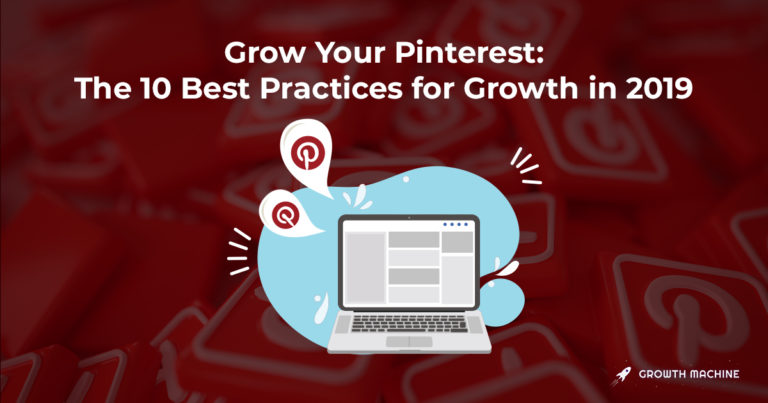How Content Pillars Improve Your Content Quality and Drive More Customers to Your Business
If you’ve been in the marketing game for a while, you have likely heard the term content pillars used at one point or another.
Most marketers or founders who haven’t spent a lot of time doing content marketing underestimate how hard it is to come up with relevant content topics that can rank and convert.
Content pillar pages and topic clusters provide much-needed guidance and structure to your content. They can help improve your search engine optimization (SEO), implement high-volume keywords that make it possible to reach a wider audience, and ultimately drive your business’s online growth.
Keep reading to learn how to create content pillars for easier article creation.
What Are Content Pillars?
Content pillars are a group of topics or specific themes that your website focuses on in order to provide a comprehensive and well-rounded representation of your industry or niche. Much like a pillar of a building supports the entire structure, content pillars hold up your content plan. They’re also known as content buckets or content categories in the digital marketing world.
These overarching pillars serve as the foundation for each piece of content you create, and are used to organize and optimize new content for search engine visibility.
Popular examples of content pillars include:
- Product or service highlights: If your business offers a variety of products or services, each could be a unique pillar with its own subtopics and website pages.
- Product tutorials: This works well across a wide variety of industries, including SaaS, CPG, and product-focused e-commerce businesses. Showing your product in action is a great way to help your customers envision using it and how it could benefit their lives.
- Case studies and testimonials: A pillar dedicated to sharing customer success stories is a powerful way to build trust and credibility with your audience.
- About us: Use this pillar to shape the story you tell about your company, including your experience, mission, and team members. Customers buy from businesses they trust, and this pillar can be used to deepen that connection.
An effective content pillar strategy allows you to create a coherent and consistent message for your target audience by focusing on key topics that will attract more visitors and improve search engine rankings.
The definition of content pillars might change depending on which area of marketing you’re looking at. For example, many social media marketers refer to social media content pillars, which are used to plan posts for various social media platforms.
Although there are several different types of content pillars, we’ll focus on how they apply to an SEO or website context.
Why Are Content Pillars Important?
The best way to level up your SEO strategy and drive more traffic for your business is to position yourself as an expert in a certain industry or niche.
Content pillars help you achieve this by giving you clarity on exactly what that niche is and how to communicate with your audience more effectively. This is critical to the success of your digital marketing efforts.
Here are a few other ways content pillars can make your overall marketing strategy more effective:
1. They Help Search Engines Understand Your Content Better
Successfully writing content for SEO involves a few key factors.
First, content pillars add context to your content, which improves a page’s ranking.
Search engine algorithms operate by performing a scan of all websites to find the answer a user is searching for. Rather than analyzing each web page individually, Google considers articles part of a larger whole.
Since search engines operate this way, we can conclude that your content is being ranked by search engines based on both the quality of the piece and its relationship to other pages on your site.
That’s where content pillars come in. Content pillars are what help organize content and hierarchize it for search engines, improving the overall structure and performance of your website.
The result? An increase in website traffic and visibility. This leads to more eyes on your brand and ultimately, more conversions for your business.
2. They Make Your Brand Messaging More Consistent
Content pillars help your audience understand what your business is all about.
Your content pillars should tie back to your overall brand messaging strategy. They should reflect your core brand values, value propositions, and key differentiator.
Beyond making sure your content and marketing efforts are aligned, content pillars also make your brand messaging more consistent by providing a focused structure for your website’s content. That means when a user lands on your website, they should immediately make the connection between your content and what your brand is all about.
Since most content tends to be based on research of your industry and audience, the messaging will be targeted towards the right demographic, resulting in better engagement rates. Additionally, by mapping your customer journey and referencing your content pillars at each stage, you can ensure your brand messaging stays consistent at every customer touchpoint.
The great thing about using content pillars is that the results aren’t limited to your website. By creating content that expands on the information provided on your pillar pages, you can provide a wide range of content that spans across mediums, including social media channels like LinkedIn, Facebook ads, or even email campaigns.
3. They Simplify Content Planning
Say goodbye to the days of scrambling to create last-minute content. By understanding your overarching content themes, you should be able to fill out your content calendar in half the time.
Content pillars make content planning easier by providing a clear structure and framework to guide your content creation. This makes it easier to stay organized, consistent, and on-topic, which in turn results in a more effective content marketing strategy.
Having a content pillar strategy in place allows you to create a content calendar with a clear focus and direction. You can easily plan the type of content you want to create, the topics you want to cover, and when you want to publish it.
Content pillars and clusters can create a ton of subtopics just from a single topic or idea. For example, a content pillar that focuses on how-to guides for your products could be divided in the follow ways:
- Product-specific guides: If your business sells a variety of products, you can create subtopics for each one, including how to set it up, use it, and troubleshoot any issues.
- Industry-specific guides: If your business operates across multiple industries, you could create guides that are tailored to common problems or tasks that people in that industry might need help with.
- Skill-based guides: Not everyone who uses your product will be an expert in your industry. You can create guides for sharpening skills related to your offerings.
How to Identify Content Pillars That Boost SEO
Now that you have a thorough understanding of how content pillars improve your overall marketing, let’s get to the good stuff: finding content pillars that work for your business.
Start with your audience. Take a look at your website or social media analytics to determine which pieces of content users are engaging with the most. Then, see if those specific content pieces have similar or overlapping themes. Voila — you have your content pillars.
Generally, high-performing content pillars tend to meet these criteria:
- They cover a topic that’s interesting and relevant for your target audience.
- The pillar is broad enough to be broken down into several different ideas or types of content.
Another way to identify your content pillars is to perform keyword research and see what topics come up about most frequently in your niche. What are the most commonly asked FAQs? What do people want to learn about?
Here is a good mix of paid and free keyword research tools to assist you in your search:
While keyword research is an excellent starting point for identifying content pillars, try not to get too hung up on specific keywords. Instead, focus on general areas where you can add value for your audience through your content.
Remember: The most effective SEO strategy is to create meaningful connections through your content and speak directly to your audience’s pain points.
How Many Content Pillars Is Optimal?
While the optimal number of content pillars can vary depending on the size and complexity of the site, for most businesses, 3-5 content pillars is a perfect starting point.
This allows you to keep your content focused while giving you enough flexibility to cover a range of content topics and prevent your content from becoming one-note.
How Broad or Specific Should Content Pillars Be?
A good rule of thumb is that it’s best to make your content pillars as specific as possible, while leaving yourself enough room to cover the topics that are most important to your target audience.
Say you’re a company that creates fitness supplements. A great content pillar might be “workouts,” since you can create content that explains how to use different products to supplement different workout styles. However, a content pillar like “supplements” might be too broad for users to find the information they’re looking for on a supplement site. On the other end of the spectrum, content pillars that are too specific (e.g. “bicep workouts for women in their 40s”) makes it hard to create enough content to sustain the pillar.
How to Implement a Winning Content Pillar Strategy
Once you have your content pillars nailed down, it’s time to put them into action.
A content pillar strategy is a great way to organize and optimize your website’s content for search engines.
As mentioned above, your pillars represent the main topics or themes of your website, which you can then use as the foundation for all of your content. By focusing on these pillars, you can create a coherent and consistent message for your audience and improve your website’s search engine optimization (SEO).
Here are some steps to help you implement a content pillar strategy for SEO.
1. Create Pillar Pages
Once you’ve identified your core topics, you should create a dedicated page for each one. These pages should be the foundation of your website’s content and should provide a comprehensive overview of the topic. They should be well-researched, well-written, and focus on applying clear and consistent brand messaging.
2. Create Supporting Content
With your pillar pages in place, you can now create supporting content that expands on the information provided on the pillar pages. This content can take many forms, such as blog posts, infographics, videos, or social media posts.
3. Optimize Content for SEO
We cannot stress this enough. Optimizing your content for SEO includes incorporating keywords related to the pillar topic in the title, meta tags, and throughout the content. It’s important to not stuff keywords, as this practice can result in getting penalized by search engines.
4. Internal Linking
Another key aspect to your content pillar strategy is to make sure all the pillar pages and any supporting content are internally linked with each other. This helps search engines understand the relationship between the different pages on your website, and helps visitors navigate your website content more easily.
5. Promote Content
Create a content promotion plan for all your pillar pages and supporting content. We recommend using a content calendar to plan out what content will get posted across your different channels for optimal timing. This will help drive traffic to your website and increase visibility for your pillar pages in search engine results.
6. Monitor and Update
When it comes to your content pillar strategy, don’t just set it and forget it. Monitor content regularly and make any necessary updates. This may include revisiting your content pillars, creating new pillar pages or removing older ones, creating new supporting content, or updating existing content to reflect changes in your industry or target audience.
Start Using Content Pillars to Attract More Visitors to Your Website
Content pillars are a great way to improve your content performance and attract more customers to your business.
Not only do they allow you to identify your core topics and create dedicated content for each topic, they help you focus on a consistent message for your audience that stays true to your brand.
Want help identifying content pillars and creating content on a weekly basis? Growth Machine is an SEO and content marketing agency that helps entrepreneurs put content pillars into action. Our team of experts is ready to assist you in researching your industry, understanding your target audience, and creating a content pillar strategy tailored to your needs. We’ll guide you in creating pillar pages, crafting supporting content, and designing a content promotion plan that will drive traffic to your website and boost your search engine rankings for years to come.
If you’re looking to attract more customers to your website organically, don’t hesitate to reach out to us. Contact us today and let’s start working together!







